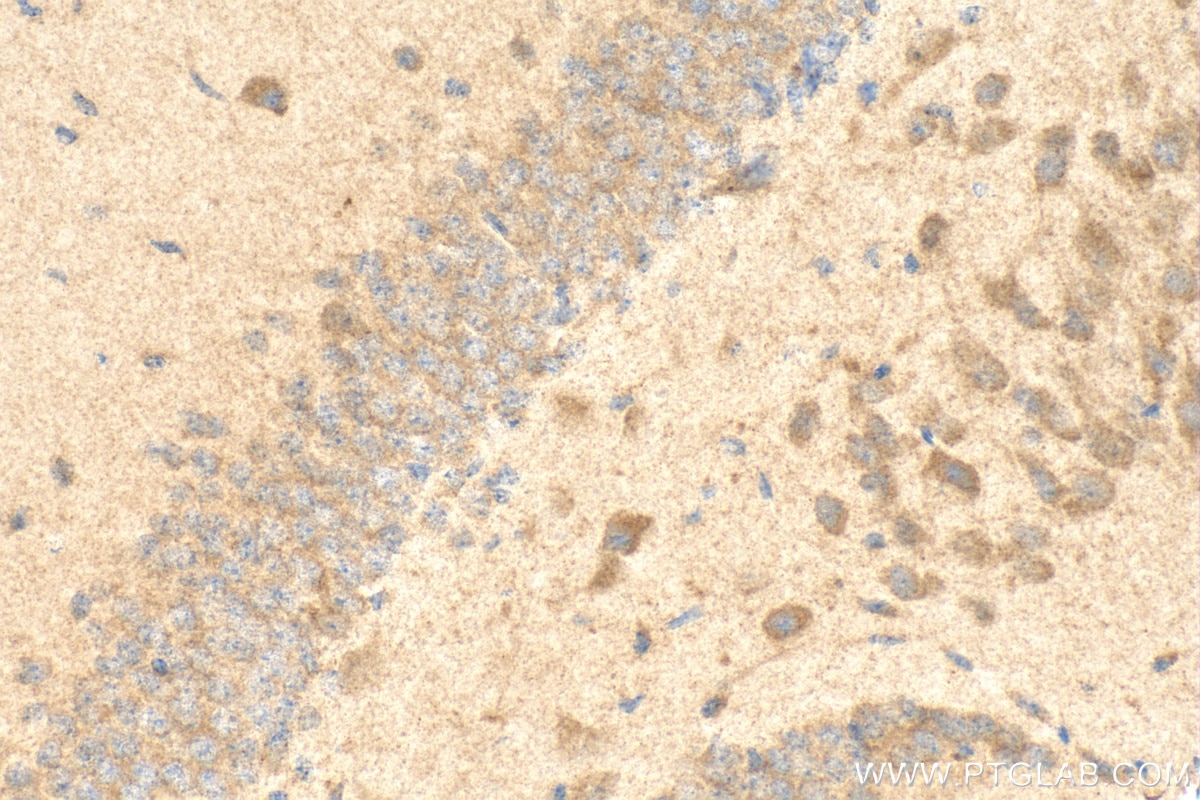Tested Applications
| Positive WB detected in | Jurkat cells |
| Positive IHC detected in | mouse brain tissue Note: suggested antigen retrieval with TE buffer pH 9.0; (*) Alternatively, antigen retrieval may be performed with citrate buffer pH 6.0 |
| Positive IF/ICC detected in | HeLa cells |
Recommended dilution
| Application | Dilution |
|---|---|
| Western Blot (WB) | WB : 1:500-1:2000 |
| Immunohistochemistry (IHC) | IHC : 1:50-1:500 |
| Immunofluorescence (IF)/ICC | IF/ICC : 1:50-1:500 |
| It is recommended that this reagent should be titrated in each testing system to obtain optimal results. | |
| Sample-dependent, Check data in validation data gallery. | |
Published Applications
| WB | See 273 publications below |
| IHC | See 34 publications below |
| IF | See 23 publications below |
Product Information
25128-1-AP targets Cleaved Caspase 3 in WB, IHC, IF/ICC, ELISA applications and shows reactivity with human, mouse samples.
| Tested Reactivity | human, mouse |
| Cited Reactivity | human, mouse, rat, chicken, bovine, goat |
| Host / Isotype | Rabbit / IgG |
| Class | Polyclonal |
| Type | Antibody |
| Immunogen |
Peptide Predict reactive species |
| Full Name | caspase 3, apoptosis-related cysteine peptidase |
| Calculated Molecular Weight | 32 kDa |
| Observed Molecular Weight | 17-25 kDa |
| GenBank Accession Number | NM_032991 |
| Gene Symbol | Caspase 3 |
| Gene ID (NCBI) | 836 |
| RRID | AB_3073913 |
| Conjugate | Unconjugated |
| Form | Liquid |
| Purification Method | Antigen affinity purification |
| UNIPROT ID | P42574 |
| Storage Buffer | PBS with 0.02% sodium azide and 50% glycerol, pH 7.3. |
| Storage Conditions | Store at -20°C. Stable for one year after shipment. Aliquoting is unnecessary for -20oC storage. 20ul sizes contain 0.1% BSA. |
Background Information
Caspases, a family of endoproteases, are critical players in cell regulatory networks controlling inflammation and cell death. Initiator caspases (caspase-2, -8, -9, -10, -11, and -12) cleave and activate downstream effector caspases (caspase-3, -6, and -7), which in turn execute apoptosis by cleaving targeted cellular proteins. Caspase 3 plays a key role in the activation of sterol regulatory element binding proteins (SREBPs) between the basic helix-loop-helix leucine zipper domain and the membrane attachment domain. Caspase 3 can form heterocomplex with other proteins. This antibody can recognize the cleaved Caspase 3 fragments. This antibody is specific for cleaved caspase 3, and does not recognize full length caspase-3. The cleaved fragment of Caspase 3 might form complex and shows at around 30-35 kDa by western blot (PMID: 25501826).
Protocols
| Product Specific Protocols | |
|---|---|
| IF protocol for Cleaved Caspase 3 antibody 25128-1-AP | Download protocol |
| IHC protocol for Cleaved Caspase 3 antibody 25128-1-AP | Download protocol |
| WB protocol for Cleaved Caspase 3 antibody 25128-1-AP | Download protocol |
| Standard Protocols | |
|---|---|
| Click here to view our Standard Protocols |
Publications
| Species | Application | Title |
|---|---|---|
Adv Sci (Weinh) Wogonin Attenuates Atherosclerosis via KLF11-Mediated Suppression of PPARα-YAP1-Driven Glycolysis and Enhancement of ABCA1/G1-Mediated Cholesterol Efflux | ||
J Hazard Mater Exposure to 6PPD-Q induces dysfunctions of ovarian granulosa cells: Its potential role in PCOS | ||
Small A Responsive Nanorobot Modulates Intracellular Zinc Homeostasis to Amplify Mitochondria-Targeted Phototherapy | ||
Redox Biol DNAJC12 causes breast cancer chemotherapy resistance by repressing doxorubicin-induced ferroptosis and apoptosis via activation of AKT | ||
J Adv Res TRPM2-mediated feed-forward loop promotes chondrocyte damage in osteoarthritis via calcium-cGAS-STING-NF-κB pathway | ||
Adv Healthc Mater Copper-Based Composites Nanoparticles Improve Triple-Negative Breast Cancer Treatment with Induction of Apoptosis-Cuproptosis and Immune Activation |
Reviews
The reviews below have been submitted by verified Proteintech customers who received an incentive for providing their feedback.
FH Antonijo (Verified Customer) (11-11-2025) | Previously, we used Cl. Casp3 (Asp175) from Cell Signaling Technology and had trouble getting a signal, and only at a dilution of 1:250 were we able to get a signal. Since we use Cl. Casp3 from Proteintech, we are able to get a signal at a dilution of 1:1000 and this antibody gives the quality result we need for our research on HK-2 cell line.
 |
FH Vignesh (Verified Customer) (09-19-2025) |
|








